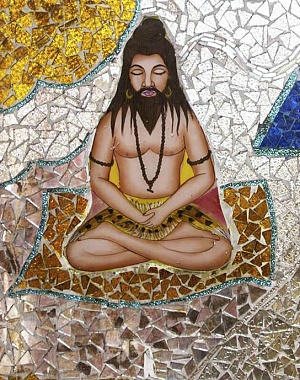News
-
 Pranayama workshop, Mar 1-7
Pranayama workshop, Mar 1-7
-
 21-day Pranayama challenge
21-day Pranayama challenge
-
 Nāda meditation workshop, January 8-12
Nāda meditation workshop, January 8-12
-
 April 3, Navaratri with Yogi Matsyendranath Maharaj, Australia, Queensland
April 3, Navaratri with Yogi Matsyendranath Maharaj, Australia, Queensland
-
 March 17, 2020. Purifiying Pranayama With Yogi Matsyendra Nath
March 17, 2020. Purifiying Pranayama With Yogi Matsyendra Nath
-
 November 2019, Tantra Workshop Series in Argentina
November 2019, Tantra Workshop Series in Argentina
-
 Workshop in Gualeguaychu
Workshop in Gualeguaychu
-
 17-18 November 2018, Yogi Matsyendranath in Źarate (Argentina)
17-18 November 2018, Yogi Matsyendranath in Źarate (Argentina)
-
 15-16 November 2018, Yogi Matsyendranath visit to Uruguay
15-16 November 2018, Yogi Matsyendranath visit to Uruguay
-
 12 Nov 2018, Lecture at USAL (Salvador University)
12 Nov 2018, Lecture at USAL (Salvador University)
-
 10-11 November 2018, Workshops in Quilmes and La Plata (Argentina)
10-11 November 2018, Workshops in Quilmes and La Plata (Argentina)
-
 8 November 2018, Open conference in Necochea (Argentina)
8 November 2018, Open conference in Necochea (Argentina)
-
 2,3,4 November 2018 - Participating in XVI Retreat International of Yoga and Meditation
2,3,4 November 2018 - Participating in XVI Retreat International of Yoga and Meditation
-
 Programme in Québec (Canada) 13-16 June
Programme in Québec (Canada) 13-16 June
-
 Melbourne Book Launch
Melbourne Book Launch
-
 4-years Summer Program
4-years Summer Program
-
 Biography of a Russian Yogi
Biography of a Russian Yogi
-
 November 2017, Visit of Yogi Matsyendranath to Argentina
November 2017, Visit of Yogi Matsyendranath to Argentina
-
 Satsangs of Yogi Matsyendranatha Maharaj in Berlin
Satsangs of Yogi Matsyendranatha Maharaj in Berlin
-
 Seminars and trainings in June-July 2015 (France)
Seminars and trainings in June-July 2015 (France)
Kevala-kumbhaka
Kevala-kumbhaka

केवल-कुम्भक, kevala-kumbhaka
Kevala-kumbhaka is a type of spontaneous breath retention that is not tied to inhaling or exhaling. "Kumbhaka" means delay, "Kevala" means alone, single, full. Unlike other techniques of delay, Kevala-kumbhaka, in fact, is not a delay — in this state there is complete control of prana, and there is no need for inhaling and exhaling. This is the goal of all pranayama practices, the key to moksha.
Kevala-kumbhaka is described in many authoritative yogic texts, including "Hatha-Yoga Pradipika", chapter 2, shlokas 71-74:
(71) It is said that there are three types of pranayama: exhalation (rechaka), inhalation (puraka) and retention (kumbhaka). Kumbhaka also has two types: related kumbhaka (sahita) and unrelated kumbhaka (kevala).
(72) While kevala kumbhaka is practiced, sahita kumbhaka is not practiced. When you are released from inhaling/exhaling, then the breath/prana is easily delayed.
(73) Perfection in isolated breath-holding is freedom from inhalation and exhalation. This pranayama is truly kevala kumbhaka.
(74) Nothing is unattainable in the three levels of existence for one who has mastered kevala-kumbhaka and can delay for as long as he wishes.
In the "Yoga Vilakshan-Avadhut" it is said:
Kevala-kumbhaka is the best of all variants of Kumbhaka-pranayama. It gives happiness. One who observes brahmacharya, fixes his gaze on the tip of the nose, repeats bija Soham – Soham along the spinal canal, brings the breath to the upper chakra, sahasrara, and concentrates on the abstract Atmarupa, he becomes liberated during life and in this world.
Such a mechanism of "energy breathing" in an ordinary person is in a dormant state, but can be awakened by yoga practice. Breathing stops automatically, effortlessly, and the goal of yoga is achieved. This is usually practiced along with bandhas and meditation.
The conditions for success in kevala-kumbhaka indicate the observance of yama and niyama, the balance of pranas in the body, and the ability to preserve dharana.
Through the practice of kevala-kumbhaka, Kundalini-shakti gradually awakens; if such a spontaneous and natural kumbhaka occurs, it means that prana has entered the sushumna channel.

